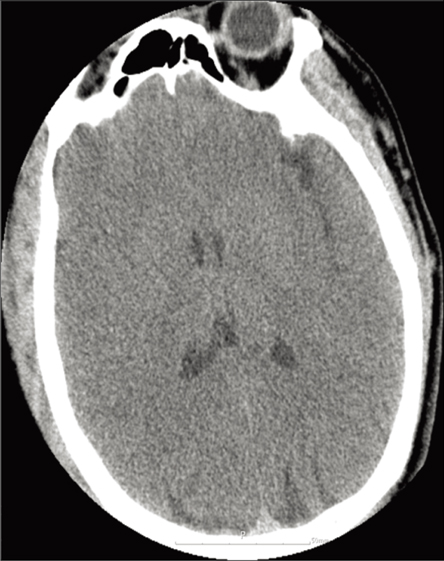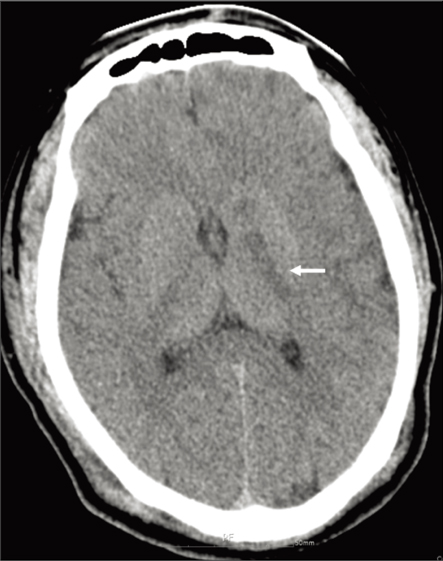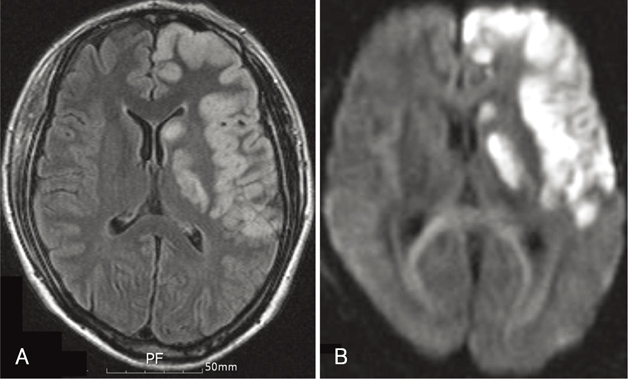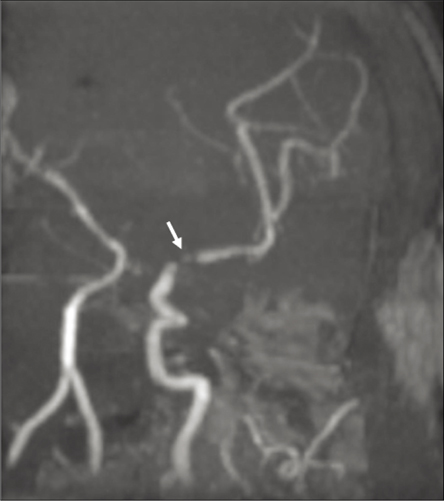J Korean Neurotraumatol Soc.
2009 Jun;5(1):22-24. 10.13004/jknts.2009.5.1.22.
Post-Traumatic Middle Cerebral Artery Dissection: A Case Report
- Affiliations
-
- 1Department of Neurosurgery, Ilsan Paik Hospital, College of Medicine, Inje University, Goyang, Korea. hsrkmj@paik.ac.kr
- KMID: 2019929
- DOI: http://doi.org/10.13004/jknts.2009.5.1.22
Abstract
- Blunt injury to the carotid artery is rare but may produce a devastating outcome. Dissection of the internal carotid artery is the most frequent cause of trauma related cerebral infarction, whereas post-traumatic middle cerebral artery dissection (MCAD) has rarely been encountered clinically. We report a case of cerebral infarction who suggested post-traumatic MCAD. The patho-physiology, clinical presentation, and treatment options of trauma induced MCAD are discussed.
Keyword
MeSH Terms
Figure
Reference
-
1. Alimi Y, Di Mauro P, Tomachot L, Albanese J, Martin C, Alliez B, et al. Bilateral dissection of the internal carotid artery at the base of the skull due to blunt trauma: incidence and severity. Ann Vasc Surg. 1998; 12:557–565.
Article2. Bunai Y, Nagai A, Nakamura I, Akaza K, Ohya I. Posttraumatic thrombosis of the middle cerebral artery. Am J Forensic Med Pathol. 2001; 22:299–302.
Article3. de Borst GJ, Slieker MG, Monteiro LM, Moll FL, Braun KP. Bilateral traumatic carotid artery dissection in a child. Pediatr Neurol. 2006; 34:408–411.
Article4. Hollin SA, Sukoff MH, Silverstein A, Gross SW. Post-traumatic middle cerebral artery occlusion. J Neurosurg. 1966; 25:526–535.
Article5. Lin CH, Jeng JS, Yip PK. Middle cerebral artery dissections: differences between isolated and extended dissections of internal carotid artery. J Neurol Sci. 2005; 235:37–44.
Article6. Lin JJ, Chou ML, Lin KL, Wong MC, Wang HS. Cerebral infarct secondary to traumatic carotid artery dissection. Pediatr Emerg Care. 2007; 23:166–168.
Article7. Liu WP, Ng KC, Hung JJ. Carotid artery injury with cerebral infarction following head and neck blunt trauma: report of a case. Yale J Biol Med. 2005; 78:151–156.8. Martin NA, Doberstein C, Zane C, Caron MJ, Thomas K, Becker DP. Posttraumatic cerebral arterial spasm: transcranial Doppler ultrasound, cerebral blood flow, and angiographic findings. J Neurosurg. 1992; 77:575–583.
Article9. Mobbs RJ, Chandran KN. Traumatic middle cerebral artery occlusion: case report and review of pathogenesis. Neurol India. 2001; 49:158–161.10. Piepgras DG, McGrail KM, Tazelaar HD. Intracranial dissection of the distal middle cerebral artery as an uncommon cause of distal cerebral artery aneurysm. Case report. J Neurosurg. 1994; 80:909–913.11. Pittock SJ, Moroney JT, Alexander M, Brennan P, Moorhouse D. Traumatic bilateral carotid dissection with concomitant cerebral infarction. J Emerg Med. 2001; 20:33–38.
Article12. Yang ST, Huang YC, Chuang CC, Hsu PW. Traumatic internal carotid artery dissection. J Clin Neurosci. 2006; 13:123–128.
Article
- Full Text Links
- Actions
-
Cited
- CITED
-
- Close
- Share
- Similar articles
-
- Traumatic Dissection of Middle Cerebral Artery with Intimal Flap
- Intracranial Cerebrovascular Revascularization(Extracranial-Intracranial Arterial Bypass, EIAB)
- Traumatic Rupture of Middle Cerebral Artery Aneurysm
- Reversible Cerebral Vasoconstriction Syndrome with Concurrent Anterior Cerebral Artery Dissection
- Traumatic Occlusion of the Middle Cerebral Artery





